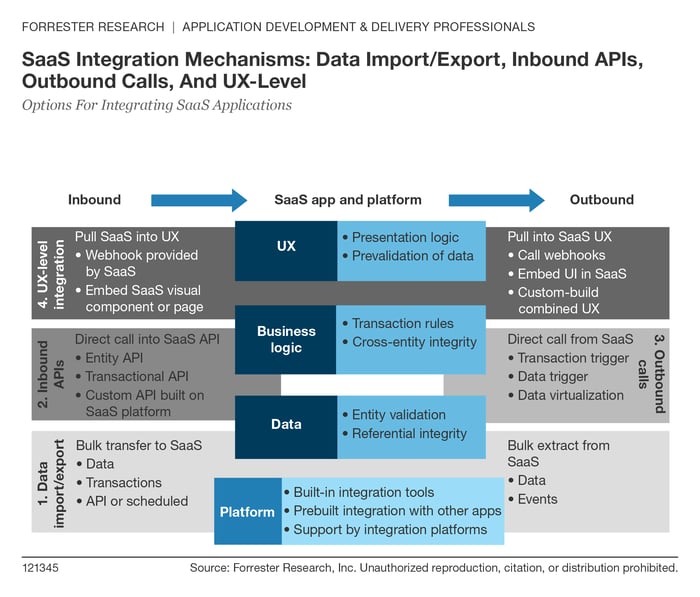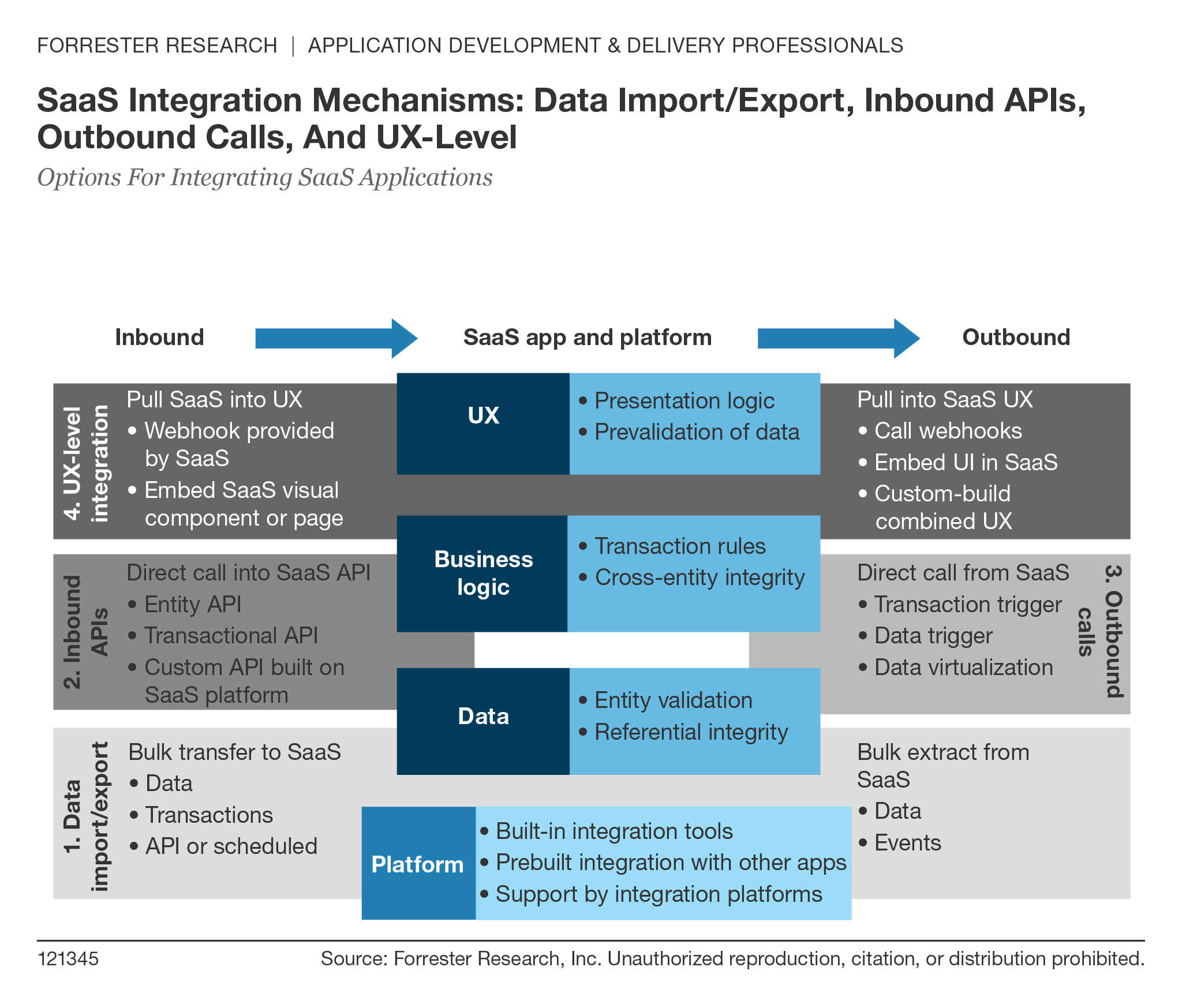Integrate SaaS Applications into your Digital Experience Architecture
We’ve mentioned that organizations still need to have more than one digital experience platform and/or adopt additional solutions to address weaknesses and gaps in their existing platforms. Many companies are opting to tack on SaaS solutions to fill their DX gaps. This can be a great approach, with a couple of caveats.
Why Integrating SaaS Applications Remains Challenging
The main caution about adopting SaaS solutions pertains to integration. People assume that SaaS applications are easier to integrate than applications “behind the firewall.” That’s not necessarily so. We’ve seen companies adopt SaaS offerings that were difficult to integrate with their CX architecture, and/or they were not conceptually integrated with the rest of their software tools.
Then you have the sheer proliferation of tools to contend with, often with poor sharing capabilities and completely unique and disparate user interfaces. As Derek Walter points out in Martech Maturity: The Platforms Are the Problem, a recent article for CMSWiRE, there are now more than 3,500 companies in the martech space, creating apps for every possible marketing need. He cites Scott Brinker’s assessment that most companies are using upwards of 20 or more applications as part of their marketing stack. That’s just the marketing applications! It doesn’t include apps that address commerce and service needs, including customer communications management.
Guidance for Integrating SaaS Applications
In a Forrester report entitled Options for Integrating SaaS Applications, analyst Randy Heffner explains why integration remains challenging, even with SaaS apps:
“Software-as-a-service (SaaS) applications have grown fastest in narrowly scoped point solutions, creating risk that user experience, business processes, and data insight will fracture across SaaS silos. To achieve coherent business operations, application development and delivery (AD&D) pros must connect across the silos using each SaaS vendor’s distinct integration features.”
Heffner goes on to note that SaaS apps vary widely in integration support, forcing application development and delivery (AD&D) pros to take responsibility for integration success.

According to Heffner, there are four mechanisms by which you can integrate SaaS apps:
- Data import/export (rudimentary integration)
- Inbound APIs (near real-time integration, with limits)
- Outbound calling options (which vary widely)
- UX-level and other advanced approaches
He notes that the user interface is where apps are generally least evolved, but it’s where the most integration opportunity exists. The UX level is also where the end user sees (literally) the most value from integration.
Read the report for an in-depth exploration of each of these mechanisms of integration and Heffner’s guidance on key usage scenarios for each type of mechanism. If you’re not a Forrester client and would like a copy of the report, get in touch via our Contact Us page. This is a first-come-first-served offer, though. We can only share the report with a limited number of external (i.e., non-Topdown) people.
Prioritize Integration Capabilities When Choosing SaaS Solutions
The main takeaway is that you shouldn’t buy a SaaS solution because you like what it can do; buy it because it makes sense in your digital architecture and will integrate with it. Understand conceptually how it will fit in with your architecture. Do you need to share content, data, workflow, etc.? Make sure a solution offers the capability to integrate at those layers BEFORE you buy it.
Be sure to subscribe to our blog using the form at the top of our main blog page for more great content like this to help you select software solutions that will integrate well with your company’s customer experience management infrastructure.







